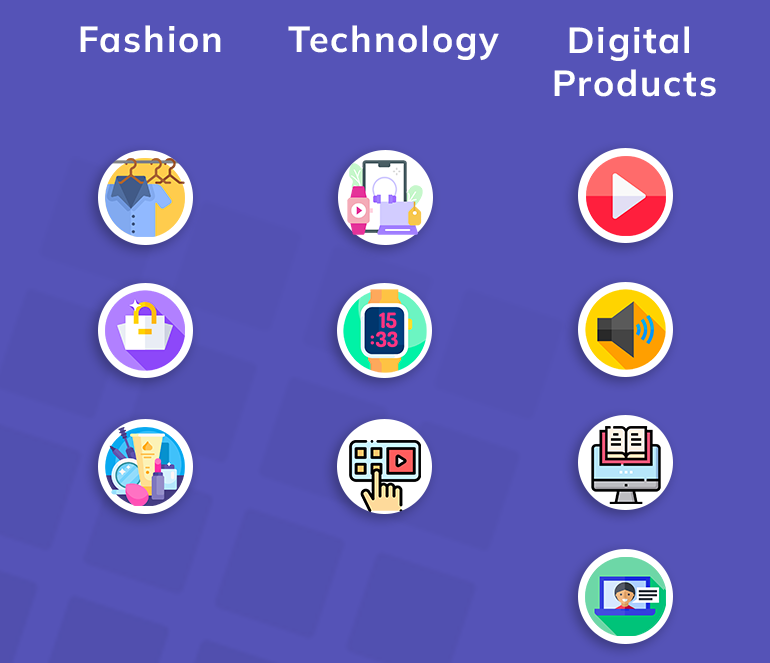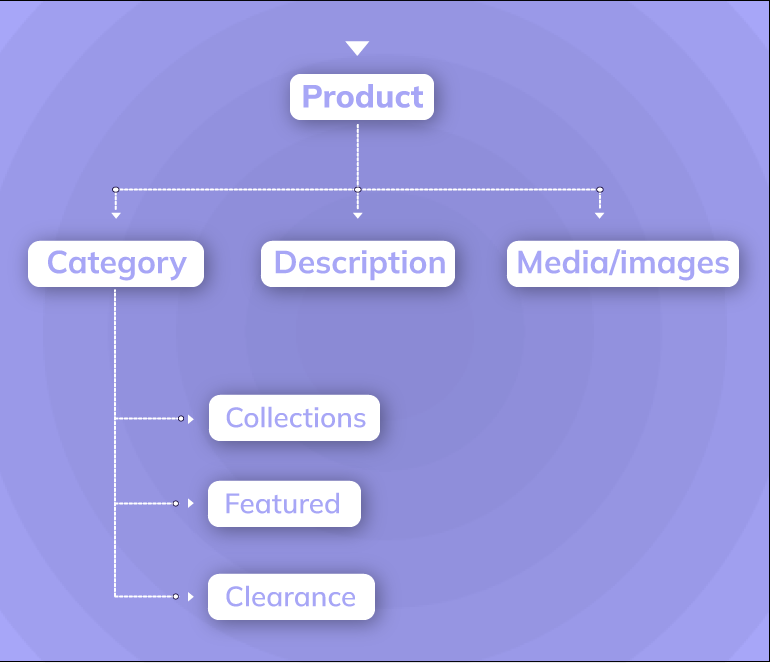Updated on April 23, 2024
Five years ago, building an E-commerce website would have required you to find a development company, a digital agency or recruit an army of developers and creative professionals. Today, in 2022, things are different. Anybody, literally anybody, can create their own full-fledged E-commerce website without breaking into a sweat.

Statista forecasts that the E-commerce industry will grow at a staggering rate of 50% by 2025 to touch about 7,400 billion in revenue (Source).
This mammoth revenue will not be generated by a single company like Amazon, Alibaba, or the like. It would be a collective of all E-commerce websites that are about to be launched, have launched, or are growing.
If you want to step into the world of E-commerce and take a small piece of the big and ever-growing pie, now is the best time. This article will tell you how you can go about building your E-commerce website and the tools that you will need to make the process easier.
Caveat: this is not a technical guide to building your online store. Depending on the platform you choose, the technical procedure of setting up the E-commerce website will differ.
1. Find your niche and brand identity
The E-commerce industry is far more complex and sophisticated than you can imagine. To stand out from the crowd and to have a unique offering of your own, it is necessary to identify your niche and carve a brand identity. Your niche and brand identity must go hand in hand.
The brand identity, which is the strongest driver of sales, is directly dependent on the choice of niche. This is because prospects, before they become customers, form a mental image of the products based on the brand. Hence, there should be a strong correlation between the niche you are choosing and the brand identity.
There are hundreds of niches you can choose from. However, the most popular ones include
- Fashion: Clothing, accessories, cosmetic products, etc.
- Technology: Gadgets, IT accessories, peripheral devices, audio/video equipment, etc.
- Digital products: Video, audio, eBooks, online classes, or digital services like video/image editing to enhance your images

You could even choose a more specialized alternative, and sell services rather than products. For instance, you could lead the industry with reseller hosting packages that you offer under the banner of your brand identity. The options are endless!
Identifying the niche you want to focus on and attaching a brand identity to it is the first step to building your E-commerce website. Next in the line of tasks comes the naming of your E-commerce website as well as choosing the right platform as well as ecommerce hosting.
2. Name your E-commerce website
There are two parts to your E-commerce website’s name. First, it will have an official name that will be mentioned in all official correspondence and registrations. Second is the brand name, which is what the external world of customers and prospects would see. It is necessary to define the official business name for paperwork and the brand name.
There are businesses that have separate brand names and legal names. For example, Old Navy and Athleta may be brand names that you are familiar with, but did you know they are legally owned by Gap Inc? When naming your E-commerce brand, imagination and creativity, have no limits.
Be careful not to change the business name too often lest your customers will be confused as to who you are. Also, you will have to create brand presets for the website logo, stationery, and much more based on the brand name. So changing the brand name is a huge task that will incur many expenses and effort.
3. Sketch the website layout
For an E-commerce website, the store layout is the virtual storefront. It should look impressive, make prospects prod around, and come to a buying decision ASAP. This mandates that the website layout be intuitive and as persuasive as possible. It is always recommended to create a mockup of the website before embellishing it with finer details and media like images and carousels.

There are several components you can use to your advantage to make the website layout primed for conversion.
- Navigation – The first few folds of the E-commerce website should put the spotlight on the latest products, best sellers, pre-release orders, and so on. It should make the prospect curious and make them think of a purchase.
- Global search – Most popular online stores have a global search bar which makes it easy to find products by typing in a search phrase. Such is the utility of the global search bar is considered a basic prerequisite in any website.
- Product catalog – The product catalog is basically the map of all the products you offer for sale on your website. The catalog should have size details, pricing, and inventory availability.
- Offers zone – A dedicated offers zone on the website will make it persuasive for customers to purchase impulsively. It also spares them from going through the entire website to find the best deals.
- Quick checkouts – Bringing a customer closer to purchasing is half the battle. A cumbersome checkout process can deter customers from completing the purchase, forcing them to look for other options.
Suggested Read: (ONDC) Open Network For Digital Commerce: Everything You Need To Know
4. Choose an E-commerce website builder
Until recently, building an E-commerce website required engaging an E-commerce development company or building an in-house team. Now, with the advent of advanced technologies and increased accessibility, businesses have the option to partner with an ecommerce website development services provider to create their online stores. Both these options were time-consuming and expensive as well. Also, it was difficult to make any changes to the E-commerce website since there were a lot of stakeholders involved.
However, a new breed of E-commerce website builders has come into the foray that makes it easy to build websites. They offer drag-and-drop components that require no coding or previous development expertise.
1. Shopify
The most popular E-commerce website builder that offers end-to-end features, including order management, staff management, and customer management. Shopify comes with a bunch of free and paid apps that will boost the performance of your E-commerce store. You can read about seven of the best Shopify apps in our blog post here.

2. Wix E-commerce
Wix started as a website builder but has now become a reliable E-commerce website builder. It offers over 500 templates that you can use to build E-commerce websites instantly.

3. BigCommerce
BigCommerce is a SaaS-based E-commerce website platform. It allows you to scale your E-commerce operations as and when your business grows. The cost is also calculated based on resources used and hence is considered the ideal choice for startups.

4. Squarespace
Squarespace is yet another website-building and domain-hosting company. It is known for aesthetically appealing templates that are ideal for fashion and retail E-commerce stores. Squarespace also offers templates to set up stores that sell digital services.

5. Zyro
Compared to other E-commerce website builders, Zyro is one that comes with AI-enabled solutions for E-commerce website building. Speed is its USP, which along with its simplicity and affordability, makes it a good choice as an E-commerce website builder.

Things to consider while choosing the E-commerce platform
There are countless E-commerce platforms available on the internet today. However, before making the final choice, you should check for some essential prerequisites. It will save a lot of time and effort in the future when your website is growing in traffic and offerings.
1. Website performance
The website should be capable of running smoothly without freezing even when it becomes heavy with media, components, or paywall features. A chatbot can go a long way in making your website more responsive and easier to navigate, and we have written an entire blog post on how to build a chatbot.
2. Workload management
With time, the website will see a huge uptick in traffic and transactions. The platform backend should be sturdy enough to handle the workload without breaking it down. An ideal choice would be to opt for a cloud-based E-commerce platform that would be elastic enough to scale when required.
3. Mobile-friendliness
In 2021, close to 55% of web traffic originated from mobile devices (Source). For more than half of the digitally-savvy customers, mobile has become the first point of contact with the internet, and ultimately with businesses as well. For the same reason, it is necessary that your business is mobile-friendly.
4. SEO friendliness
For any website, including an E-commerce website, to become easily discoverable on the internet, it should be SEO-friendly. The E-commerce platform must provide features that will simplify adding meta titles and descriptions, product descriptions, and other necessary SEO components. Take advantage of an SEO checker that can identify technical errors on your E-commerce website and learn how to optimize pages for search engines. To further enhance your website’s visibility and drive more organic traffic, consider partnering with a specialized E-commerce SEO agency.
5. Security
An E-commerce website that has suffered a cybersecurity attack usually gets wiped away from the business in less than six months (Source). Cybercriminals are increasingly targeting small businesses in the digital space that do not have deep pockets to ramp up their cyber security defenses. This makes it mandatory to choose an E-commerce platform that can handle cybersecurity threats that keep changing form with time. Don’t forget about the email security threats either. Make sure your email domain is secured with DMARC to avoid phishing and impersonation attacks.
6. Set up the product catalog
In an offline store, your customers have the convenience of walking through the store aisles and picking up the products that they need. In an online store, a product catalog is what enables product discovery. Your customers should be able to locate the product category and individual product page that they are interested in. This requires setting up the product catalog in an efficient manner. There are three components that will help with this.

- Product categories
If the product catalog can be compared to a tree, the product catalog is its trunk from which product subcategories and individual product pages will branch out. For instance, product categories like fashion, electronics, household, etc., will branch out into subcategories like clothing, computers & peripherals, cleaning supplies, etc., respectively, and ultimately into individual product pages.
- Product descriptions
Product descriptions are detailed write-ups about the product that helps the buyers to get an understanding of the product’s make, the material used, warranty details, etc. It should be as elaborate as possible in order to provide the buyer with as much information as possible akin to an offline buying experience.
- Product images
Images do a wonderful job of convincing customers that the product that they intend to buy matches their taste. Check if your E-commerce platform offers the facility of using 360-degree images, which allow the user to explore the product from all angles and views.
Further, you can also incorporate product videos that will give a popper demo of the product. Such product imagery and videos will help the prospect to make a quicker buying decision.
6. Configure payment methods
An E-commerce website without a payment gateway is just another website. Payment gateways are what enable a website visitor to purchase products from your website without having to leave the website. As a growing E-commerce website, you can configure payment methods in three ways:
- Redirects – where the customer is taken to the payment gateway of a third-party service provider. E.g: PayPal
- Checkout on-site, payment off-site – The payment details like card details or internet banking details are collected on the website, but at the final step of processing it, the customer is taken to a third-party vendor site. The benefit of this method is that it reduces one step from the overall checkout process. However, you should take care to encrypt the payment data while sending it to third parties for processing.
- On-site payments – End-to-end on-site payment processing ensures that there is complete control over the payment cycle. It allows for providing one-click or one-page payment processing, which delivers a better user experience.
7. Chalk out the shipping and returns policy
Logistics is the hardest part of running an E-commerce website. You must take adequate measures to take your products to customers and deliver them on time. Most customers tend to gravitate towards E-commerce websites that offer quick shipping and also accommodate returns. To avoid any ambiguity and misunderstanding, it is better to define the shipping and returns policy.
The policy should mention the expected time taken to ship and deliver the products at the customer’s location. Additionally, it must also mention the conditions under which returns will be accepted and whether it qualifies for a replacement or a refund.
These tiny details go a long way in instilling confidence in the customer and making them trust your E-commerce store.

8. Publish your E-commerce website
The last leg of building your E-commerce website is pushing the website live. It might seem like a task that requires the push of a button. On the contrary, there are several checks you must do before taking your E-commerce website live.
Make sure you run these checks before going live.
- Is the store loading properly on mobile?
- Does the product page lead to the checkout page correctly?
- Is the store navigation working fine? Did you link all the sub-pages correctly?
- Does the website open and function smoothly on all browsers?
- Does the checkout work as planned? (A few trial transactions could help).
These checks should ensure that there are no unnoticed glitches that could throw a spanner into your E-commerce website’s performance once it is open to the public. Considering an E-commerce development company is always an option to help you navigate through these critical checks and ensure a smooth online shopping experience for your customers.
There you have it, our detailed step-by-step guide on how to build an E-commerce website. By now, we hope you have an idea of the prerequisites of building an E-commerce website, and if you want to learn more, keep watching this space.
At Kommunicate, we are envisioning a world-beating customer support solution to empower the new era of customer support. We would love to have you onboard to have a first-hand experience of Kommunicate. You can signup here and start delighting your customers right away.






